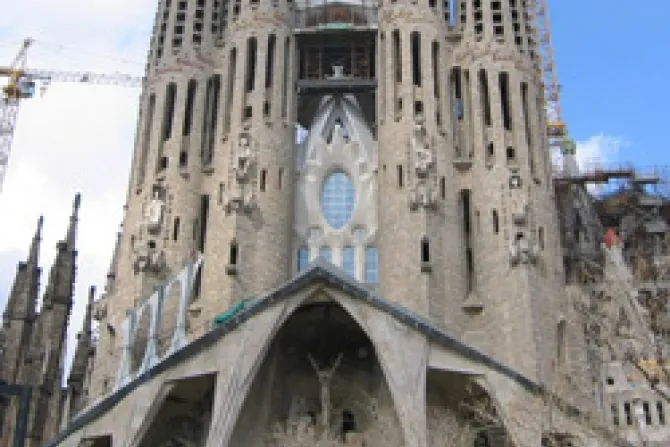Barcelona, Spain, Oct 11, 2010 / 15:54 pm
The Catholic architect, Antonio Gaudi, intended his unfinished masterpiece, the Church of the Holy Family in Barcelona, to be a sort of “catechesis,” said Cardinal Lluis Martinez Sistach of Barcelona.
The church, the cardinal said in his weekly column, is “a unique church in the world,” not only because of the technical innovations involved in its construction, but also for its intensive “biblical and liturgical symbolism.”
Pope Benedict XVI will consecrate the Church of the Holy Family and declare it a basilica during his Nov. 6-7 visit to Spain. In advance of the visit, Cardinal Sistach spoke about the deeply Catholic vision of Gaudi, who died in 1926 and whose sainthood cause was introduced at the Vatican in 2009.
“If we look at the church from outside, with its eighteen bell towers and its façades and walls, we find ourselves before the reality of the Church: the highest bell tower dedicated to Jesus Christ; it is surrounded by the four evangelists; in the apse, like a mother’s womb, is the Virgin Mary; and the twelve apostles distributed in groups of four on each of the three main facades (of the Church, representing): the birth, the passion, the glory,” Cardinal Sistach explained.
One of Gaudi’s technical and symbolic innovations was to move the content of the interior reredos, or altar decorations, to the outside facades.
The resulting effect is that each of the Church’s facades is like “a great reredos that offers the visitor or the faithful the chance to contemplate the mysteries of the infancy, passion and resurrection of the Lord, the message of the Beatitudes and the sacraments, the profession of faith and creation and the glorification of humanity,” he said.
He added: “Gaudi envisioned a truly Catholic and universal church, and for this reason the five continents are symbolized here, and it makes so much sense that the Pope is one to preside at its dedication.”
In his architecture, Gaudi also took into account the liturgical seasons. That is the reason he included 52 columns, one for each Sunday of the year.


